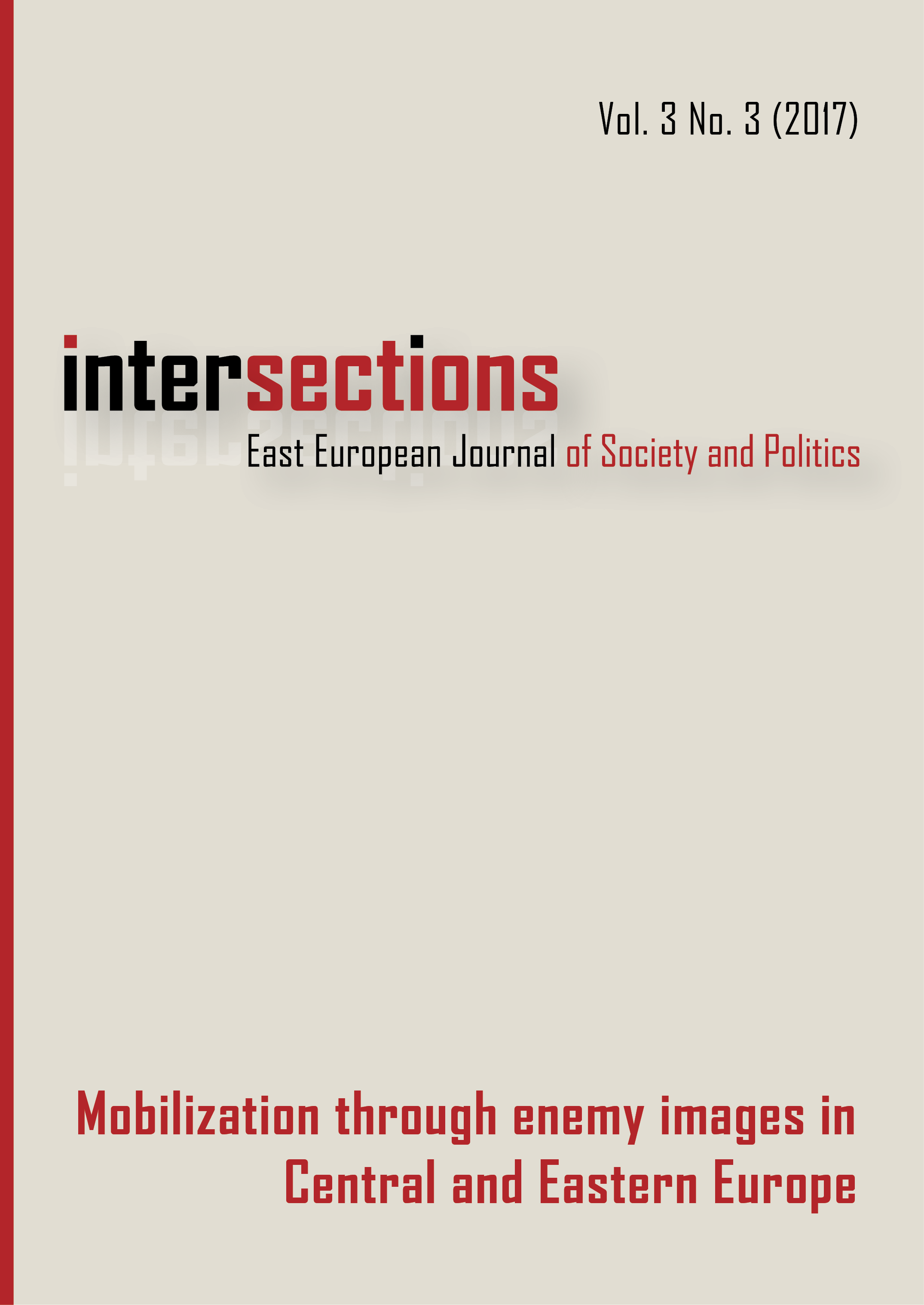Understanding Enemy Images in Central and Eastern European Politics
Towards an Interdisciplinary Approach
DOI:
https://doi.org/10.17356/ieejsp.v3i3.365Keywords:
Enemy Images; Populism; Central and Eastern Europe; PoliticsAbstract
In recent years, Europe has experienced a rise in politics based on antagonism, often discussed from the perspectives of populism and the mainstreaming of the ideologies of the radical right. In this study, we argue that there is a need for an interdisciplinary, theoretically broader and more empirically focused approach that fosters understanding of these developments. To explore the causal factors, we focus on the enemy images that are constructed and diffused by politicians, and their specific historical and structural contexts. The paper thus has two main components: First, we review what political theory, research on populism and on the extreme right and social psychology say about the functions of the use and development of enemy images. Second, we highlight the contextual factors that we consider make the success of a politics based on enemy images more likely in Central and Eastern Europe.

Downloads
Published
How to Cite
Issue
Section
License
Copyright Notice
Authors who publish with this journal agree to the following terms:
Authors retain copyright and grant the journal right of first publication, with the work three months after publication simultaneously licensed under a Creative Commons Attribution License that allows others to share the work with an acknowledgement of the work's authorship and initial publication in this journal.
Authors are able to enter into separate, additional contractual arrangements for the non-exclusive distribution of the journal's published version of the work (e.g., post it to an institutional repository or publish it in a book), with an acknowledgement of its initial publication in this journal. This acknowledgement is not automatic, it should be asked from the editors and can usually be obtained one year after its first publication in the journal.



